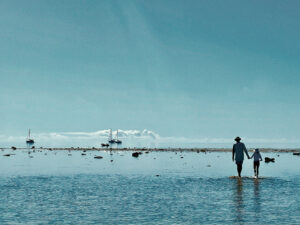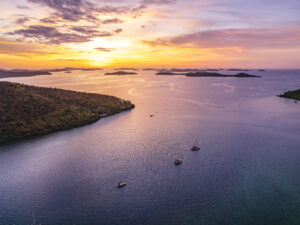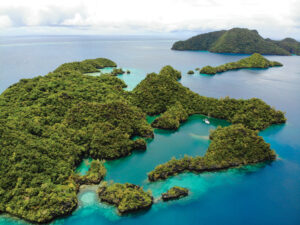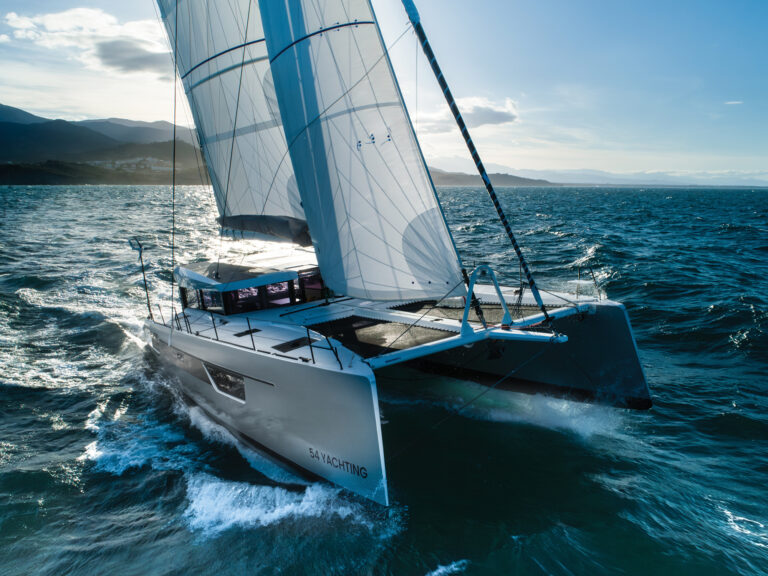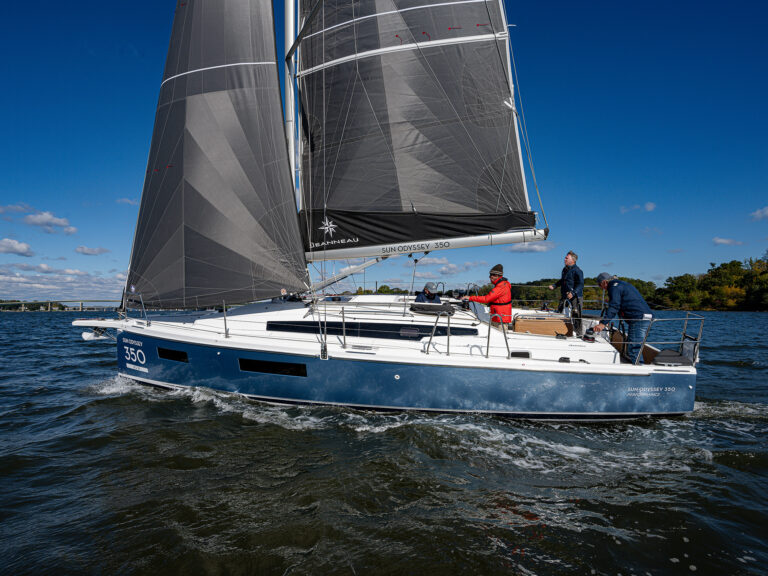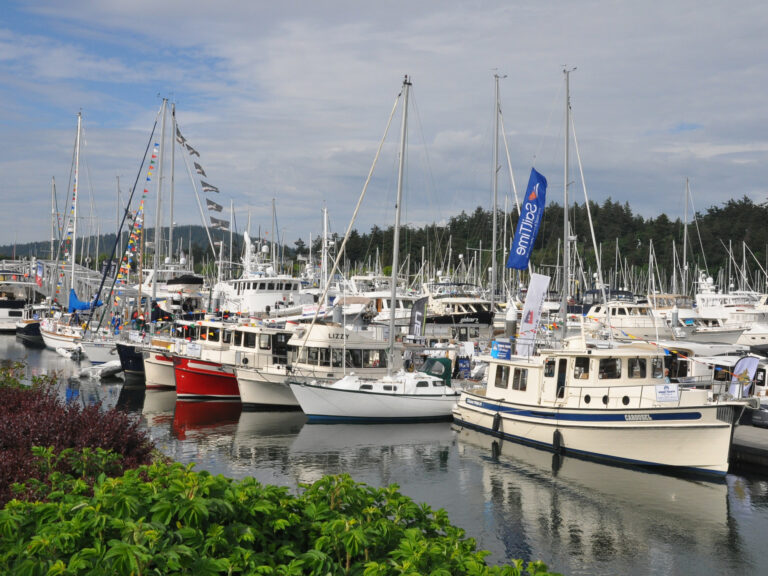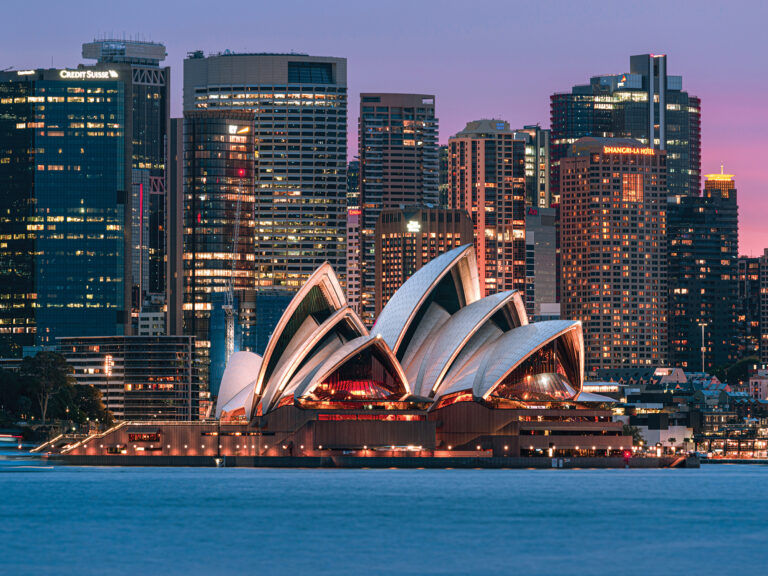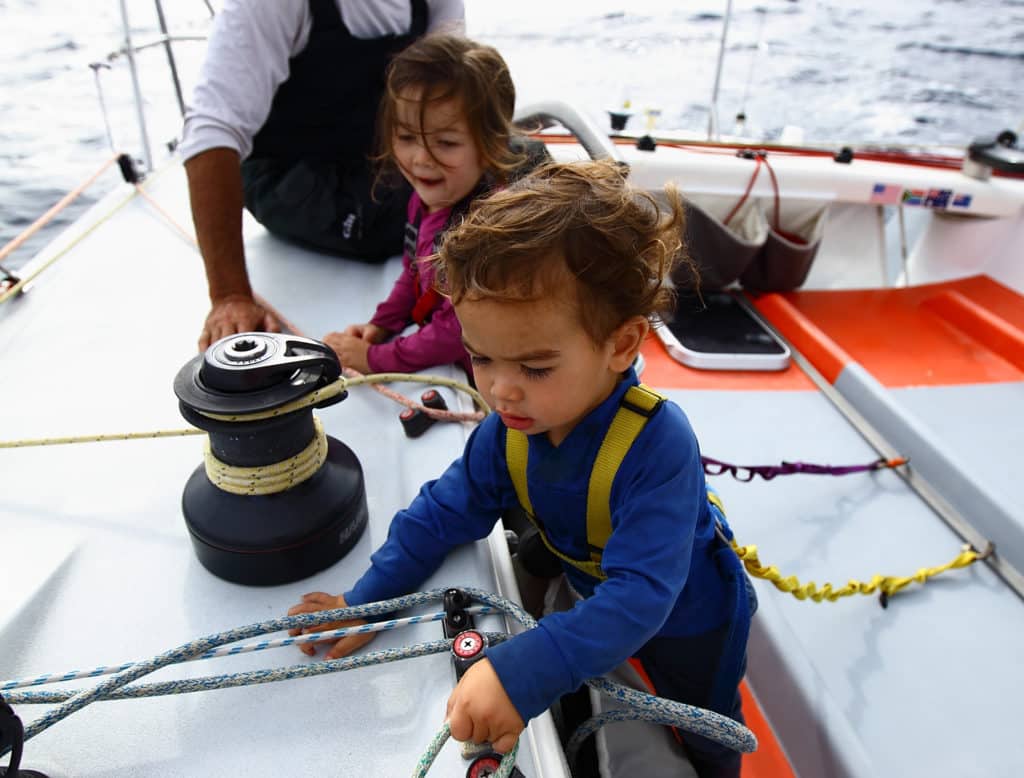
It was just past midnight on Friday the 13th. Anasazi Girl, our family’s Open 40, was rounding the Cape of Good Hope in the dark.
“Are you superstitious?” he asked me.
Our lines were now lying on the dock of the False Bay Yacht Club in Simon’s Town. My partner, James Burwick, liked to do this — depart at night and leave the lines. We were setting out on a nonstop passage from South Africa to Western Australia. James was driving the boat. The kids were in dreamland, tucked into one sleeping bag in the quarter berth. I was lying next to them, trying to rest.
“No,” I answered.
I was not superstitious, but mixed with the usual excitement of leaving was an elevated sense of apprehension. This was not our first voyage. However, we were beginning our most challenging journey as a family.
It’s always such a mind trip to leave port, especially after being on land for a long time. Nearly four months had passed since we’d made landfall in Cape Town. Our son, Raivo, was now 1, and our daughter, Tormentina, was 3. We had split our time in South Africa between Cape Town and Simon’s Town, and had rounded the Cape of Good Hope three times prior to this.
The preparation for departure was the standard: high-intensity and high-stress, with long and detailed work lists compiled and completed. The watermaker membrane was replaced; all systems checked; food, fuel and water provisions stocked; everything packed and stowed. Unnecessary items were purged or given away. Our bicycles, boat spares and shore clothes were on a freighter. Bills had been paid, emails sent, passports and boat documents stamped. We were cleared to leave the country.
More than anything, I was utterly exhausted, and relieved that at last we were underway. It was such an irony to be so tired before we had even left port.
The entire time in South Africa, James and I had agonized, out loud together and silently in our own minds, about the upcoming voyage. We went back and forth countless times about whether or not we would all go, or if James would sail this next segment alone.
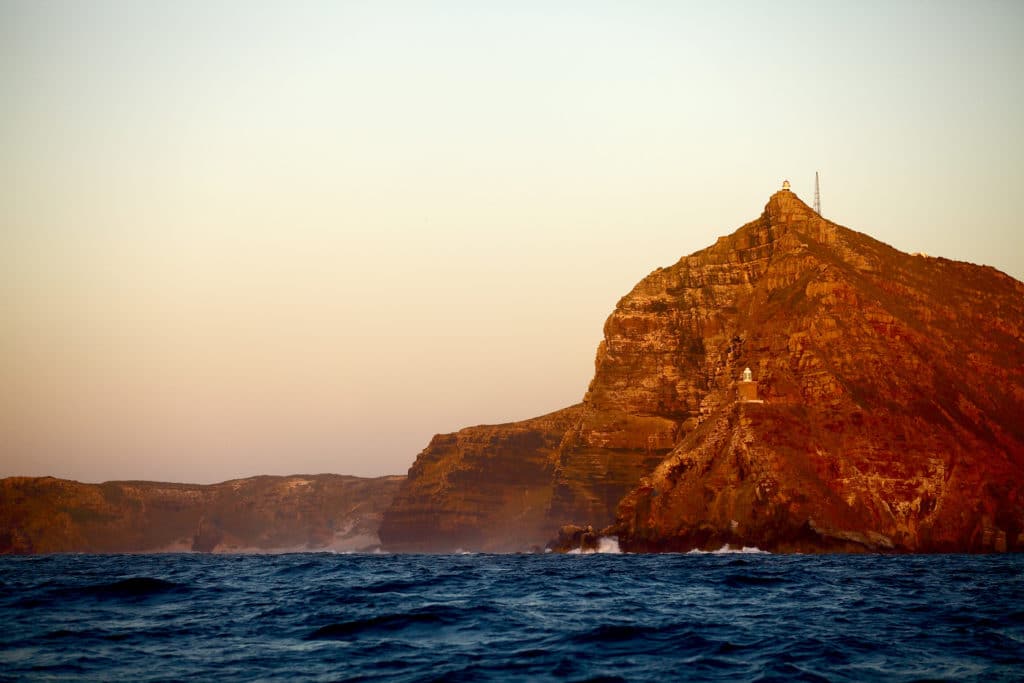
Our family approach to life is to stay open and flexible in our plans. We take action only when we are certain it is the best decision for the family. This method of living often leaves our immediate future unknown. Just days before we departed, neither of us was completely sure how things would unfold.
We’d already got a small taste of Southern Ocean sailing with the kids on the South Atlantic side, en route from Cape Verde to South Africa. James was well seasoned, having completed a solo loop around Antarctica prior to the birth of our first child. We were eager to experience with our children the isolated beauty of sailing across the southern Indian Ocean, but we were also aware of the risks that would be involved if anything went wrong in the high latitudes. Even with excellent onboard communications and safety gear, we would be a very long way from any possibility of help.
In port, I’d read Derek Lundy’s Godforsaken Sea and Ellen MacArthur’s biography Taking On the World. These Vendée Globe stories revealed to me the most extreme version of what could happen in the Southern Ocean. It was in the 1996-1997 Vendée, profiled in Godforsaken Sea, that sailor Gerry Roufs disappeared in the South Pacific. In the same race, it was the Indian Ocean segment that capsized racers Dinelli, Dubois and Bullimore. Fortunately, all three were rescued, but not before teetering between survival and death. I knew we would not be pushing the boat as hard as they did, but their tales gave me a real sense of the difficulty of our upcoming task.
No matter how much preparation, care and caution we took to get the boat and ourselves ready, we always had to contend with chance and the possibility of dangers that were totally out of our control.
Who would choose to go there with their kids?
When we discussed the voyage, James and I would often ask ourselves if we were completely out of our minds for wanting to make this passage.
Who is lucky enough to sail this stretch of wilderness with their family?
Other times, we felt that we’d been given a rare and extraordinary gift — a chance to experience with our family one of the wildest, purest, most inaccessible places on the planet.
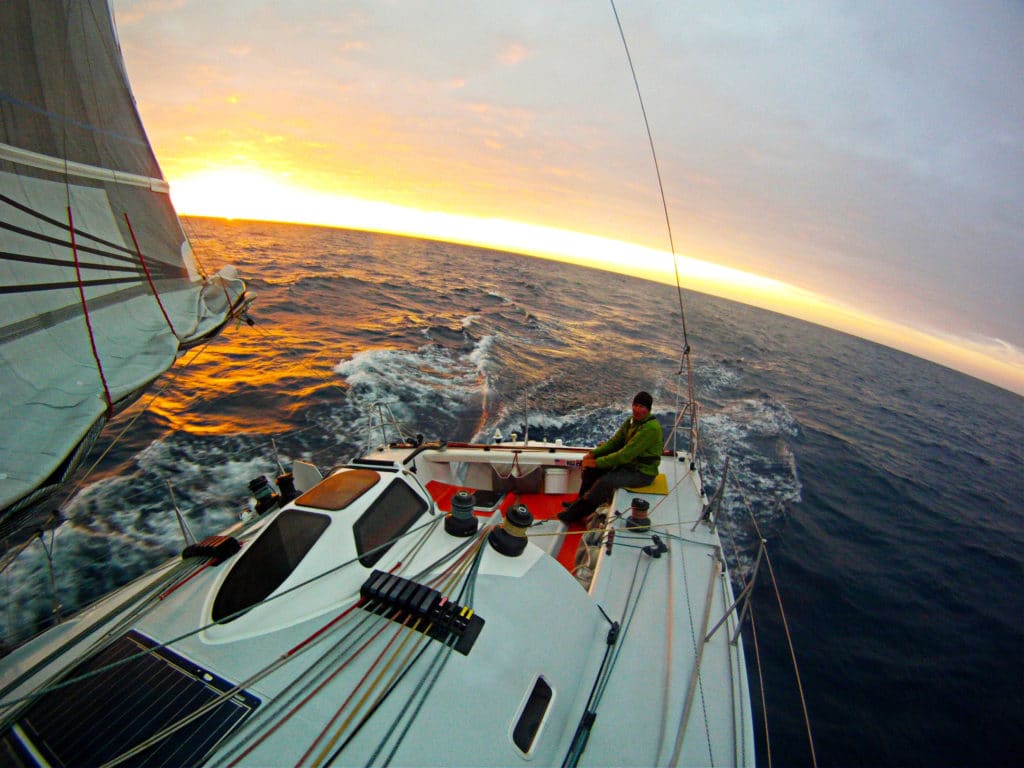
South Africa held for me a similar kind of edge between beauty and danger. In Cape Town and Simon’s Town, we were surrounded by the most stunning landscape you could imagine. It is a world-class destination for rock climbing, sailing, surfing, paragliding, kitesurfing and cycling.
The flora and fauna in and around Cape Point provided a perfect natural classroom for the kids. Blended into the scrubland known as the fynbos were baboons, turtles, lizards and wild ostriches. There were both cobras and guinea fowls in people’s backyards.
The ocean was healthy. A treasure of marine life awaited the kids’ discovery in tidal pools. African penguins played on the same rocks the kids scrambled over. Sea lions swam alongside us in the marina and basked in the sun next to us on the docks. We spotted whales and dolphins in Table Bay and False Bay. We even had the sad experience of seeing and touching a 4.5-meter great white shark accidentally killed by fishermen in False Bay.
We experienced the ethnic diversity of South Africa, and we saw the British, Dutch, Portuguese and Malay influence on the culture. We met African refugees from Zimbabwe, the Congo, the Democratic Republic of the Congo and Somalia. We learned words in Afrikaans, Xhosa and Zulu. We were exposed to the distinctive styles of African art, crafts, dance and music. We went to braais, drank South African wine, ate biltong and tried bunny chow.
Though we appreciated all of the above, we were not naive about the reality of being in a post-apartheid country. We were sickened by the segregation, racism and corruption that still thrived in the modern day. We maintained a simple life on the boat, but I knew that even our humble standard of living was lavish compared to many others’. We saw the disparity between rich and poor, from the township slums to the affluent neighborhoods. Daily we read about the crime and violence that had become a fact of life. In South Africa, you can easily pretend these things do not exist, but the reality is that the landscape is woven with concertina wires, security gates, alarms, locks and armored vehicles.
As a woman with two small children, I was constantly on guard to prevent any harm that might come to my family. I hated the feeling of being unable to simply look people in the eye as a human being without also suspecting they could be a threat to our safety. I didn’t go out at night or very far alone with the kids. I avoided situations that I wouldn’t have thought twice about entering in other parts of the world. South Africa was such a bittersweet place to be.
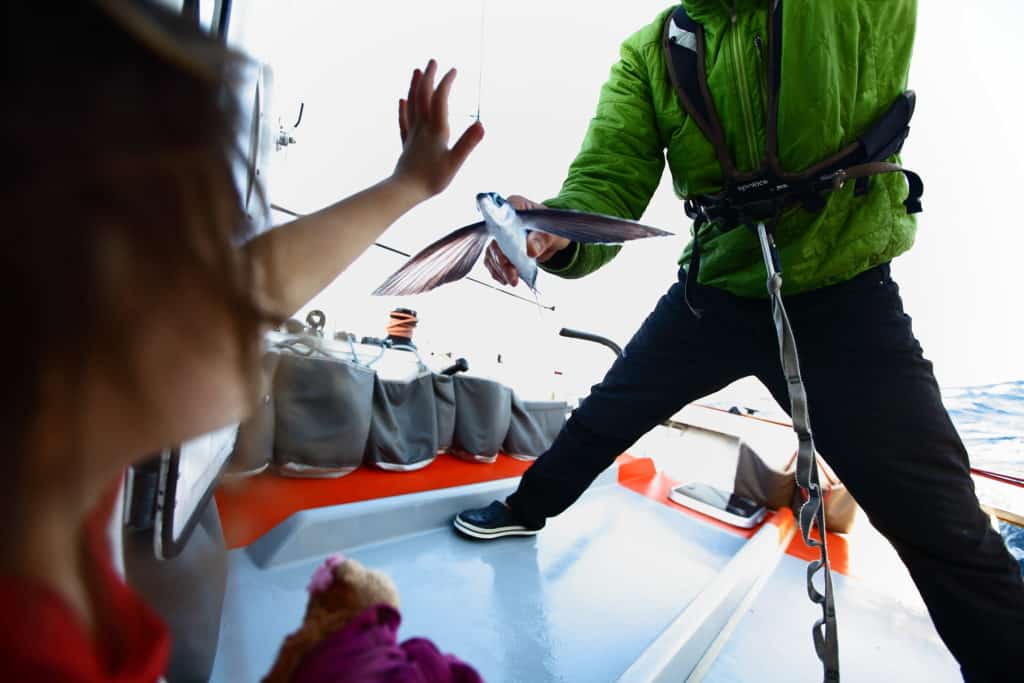
In that oppressive reality, I often felt we had the same chance of facing peril on land as we did setting forth in the Southern Ocean. Success on land or at sea had a great deal to do with how we managed the risk. To a lesser degree, it simply had to do with timing and luck.
In the end, James and I chose to take our chances with the ocean. Fear of nature felt like a much healthier sentiment for us to battle than fear of man. We wanted to give our kids a wild and adventurous life. Sailing and an ocean crossing were something that worked for us as a family.
We departed South Africa with an enormous amount of trust in the strength of our carbon-composite home, Anasazi Girl, as well as in our own strength as adventurers, sailors and parents.
Away we shifted, from the Cape of Good Hope, from the chaos of the land and the people.
Forward we went, into the dreamy realm of the albatross.
Our objective was simple: make zero errors on the voyage and arrive safely in port without breaking down or calling for rescue.
It was mid-April — late in the season for the Southern Ocean to many, but not to us. James and I felt we could sail just above 40 degrees south, avoid ice and miss the low-pressure cells dropping off of the Indian Ocean tropical cyclones. For us, leaving this late just meant more darkness; all the bad stuff on a voyage seems to happen at night, so with longer evenings, there would be a greater possibility of more bad stuff to address. Longer, colder nights also meant an increase in air density and, in turn, greater wind pressure.
Despite these factors, we felt the risks could be managed.
Our roles underway were easily defined based on our levels of experience.
My primary responsibility, as a mother, was to keep the kids safe and make sure we were all fed, clean and healthy. My secondary role was to support James whenever needed, and stand his watches when things were calm and smooth. My third obligation was to photograph and document our trip.
As captain, James had the heaviest weight on his shoulders. All the boat preparation prior to leaving, systems checks while underway, and weather forecasting and routing decisions were his. If there were any problems or repairs to be undertaken while en route, he was accountable. We would discuss options and make decisions together as much as possible, but ultimately he was responsible for the safety of the crew and vessel.
His previous solo circumnavigation on Anasazi Girl had given him the needed experience to go south again. On one level it was easier, because he’d already been down there. With me on board, he also had some relief from his solo watches, and a second set of hands when needed. But in another respect it was a million times harder, because now he was carrying the priceless cargo of our family.
As soon as Anasazi Girl was underway, James and I shifted into high-performance mode.
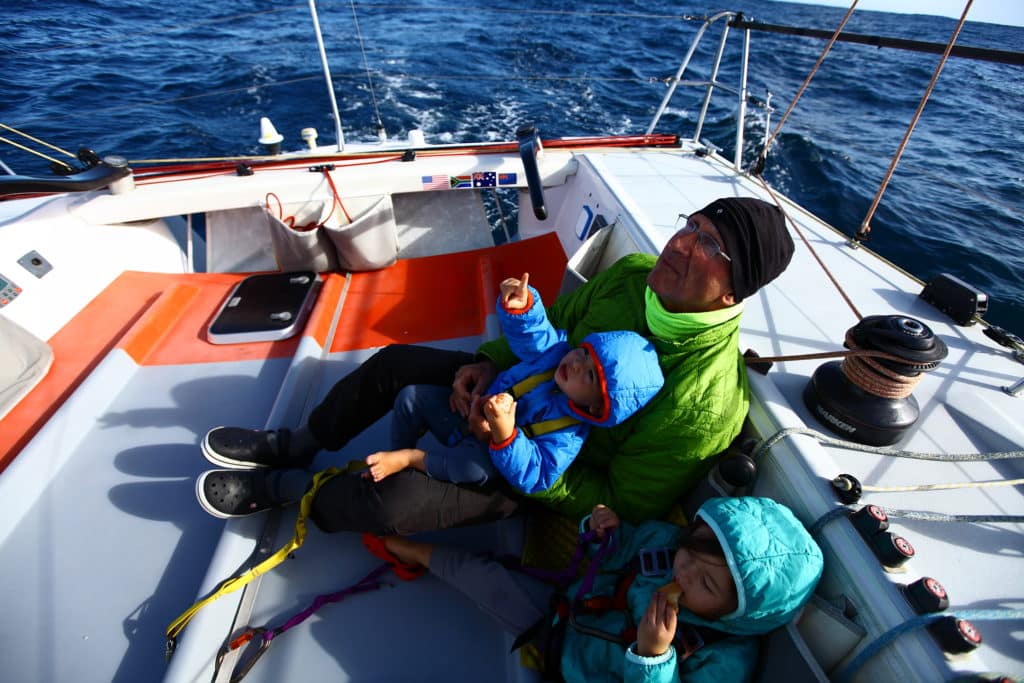
After passing Cape Point, James pushed hard to get us ahead of a fast-moving low-pressure system forecast by Commanders’ Weather. It was uncomfortable with the wind still forward of the beam, but we made it, and soon we were sailing southward.
We cut the corner of the Agulhas Current too tightly; the seas were a confused mess that made both Tormentina and me completely seasick. Then there was a close call with a freighter. Fortunately, that was the last ship we saw for the next month.
James’ plan for a safe passage was to keep the high-pressure systems to port and the lows to starboard. Just once did a high slip under us, and the three days of easterly headwinds weren’t pretty. We chose to go due south, which meant the true wind was on the beam, but on speedy Anasazi Girl, the brisk apparent wind was in our faces. The easterlies eventually passed and the cold fronts progressed. The nights were long and dark. Our typical sail combination was three to four reefs in the main and a fully battened storm jib made of Spectra. I did not go on deck to help James with sail changes, as I had on our Atlantic crossings, because often the seas were too aggressive, and I had to be vigilant down below to make sure the kids were always safe.
In extreme sailing conditions, the simple acts of moving around the cabin, cooking basic meals, eating, maintaining personal hygiene and using the head become a real physical effort. The galley becomes dangerous; knives, hot liquids and flames must be kept in complete control. A toddler on the toilet is very vulnerable when a big wave hits the boat.
The constant objective was to stay balanced, braced and safe. Order was maintained to avoid flying objects that could create a mess, cause damage or inflict injury. Above all, we wanted to prevent broken bones and burns.
When the wind and seas were perfect, we experienced the wild sensation of Anasazi Girl accelerating and surfing in the Southern Ocean. When the wind speed increased from 20 knots to 30, then to 40-plus knots, it was a velocity rush — like the first steep drop after climbing a giant crest on a roller coaster. The cabin became pressurized, and I found myself just holding on. Speed down south was our friend, keeping us in front of the weather systems.
We passed below remote St. Paul and Amsterdam islands just in time, as a 982-millibar low we were surfing finally caught up and rolled over us. We were 100 miles past the islands when the gusty shift of nasty southwest air arrived. We jibed to starboard tack and headed due east.
When the seas were confused and coming from multiple directions, I experienced some paranoia about the possibility of Anasazi Girl breaking. I think I was especially wary because the Volvo 70s, sailing at the same time in the 2011-2012 Volvo Ocean Race, were getting pounded. James reminded me that the Volvo boats were being pushed extra hard. In order to be competitive, they were also constructed to be very light, with hollow-core carbon-composite material.
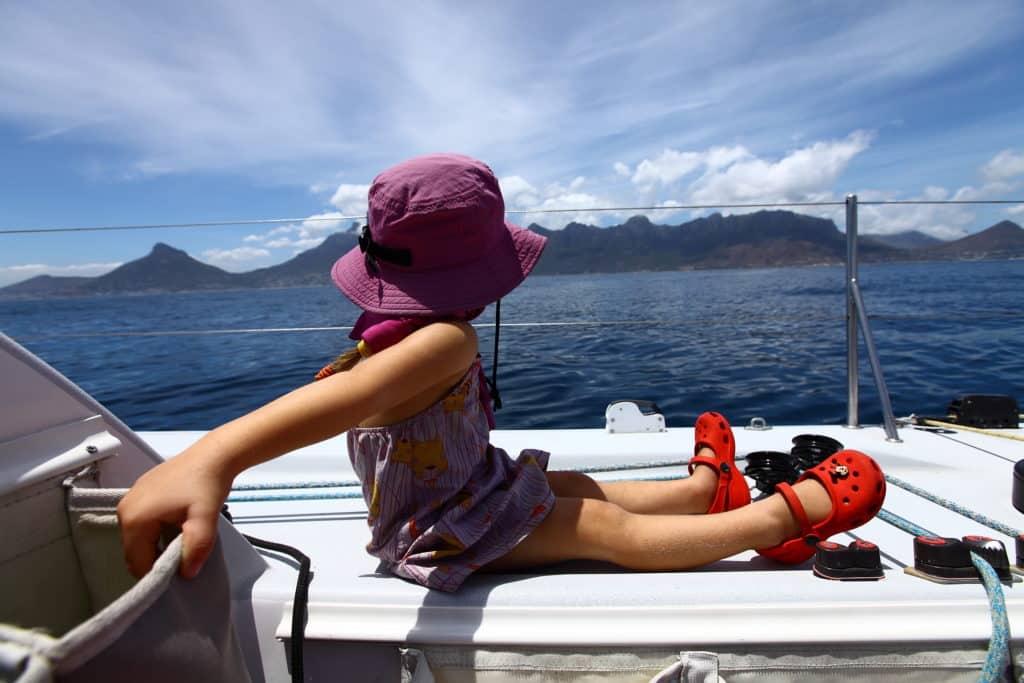
Anasazi Girl was a slightly different beast. She has a solid, or monocoque, carbon hull with a carbon-fiber and Nomex composite deck and cabin top. She is a strong, proven, bulletproof boat, built specifically to sail in these conditions. Once I relaxed, I gained renewed confidence in the boat in which my family had crossed both the North and South Atlantic. My fears eased, and I surrendered to the simple act of being at sea.
Offshore sailing is an incredible thing. It’s surreal to be so completely surrounded by water for such a long period of time. The GPS and electronic navigation software tell you where you are, but when you see nothing — no person nor boat for thousands of miles — you settle into a completely different reality. I found that when the kids were asleep and everything was quiet, my mind opened deeply into the recesses of old, long-lost memories. There were people, places, things and experiences that I had not thought about in many years. I was reminded of who I was, and it filled me with very strong emotions, especially now, with my perspective as a parent.
Being at sea also reminded me of how beautiful the natural world is in its complexity and simplicity. All the subtle changes of the environment — sea state, wind, air, sun, sky — become so monumental with the excess noise and drama of the land taken away. With the connectivity of the Web and modern technology, the world sometimes feels so small. Out there, I was reminded of what a small part of the universe we really occupy, and I felt so grateful for my life in it. One dark night, James made the only mistake of the trip. Tormentina fell asleep on his lap at the navigation station. He picked her up and swiveled around to set her in the quarter berth. A rogue wave knocked us just at that moment, and his knee hit the main battery switch.
All the power went out, which stopped the autopilot. The boat rounded up and lay on her side. The Espar heater decided to rebel too, and filled the cabin with smoke. This was not the first time Anasazi Girl was on her beam at night in the Southern Ocean, going backward with 1,700 liters of water ballast on the wrong side. But it was the first time with the family aboard.
“Is everyone all right?” James asked.
Fortunately, Tormentina and the rest of us were safe in the berths before we laid over. Everything was in place; nothing flew anywhere. James had quickly flipped the switch to turn all the electronics back on.
I looked at him and said, with a wink, “Yes. We trust you.”
We couldn’t fully open the companionway hatch, but James cracked it a few inches and turned on the fans. Then he got on his foulies, boots, headlamp and harness and re-entered the world in which he feels most comfortable.
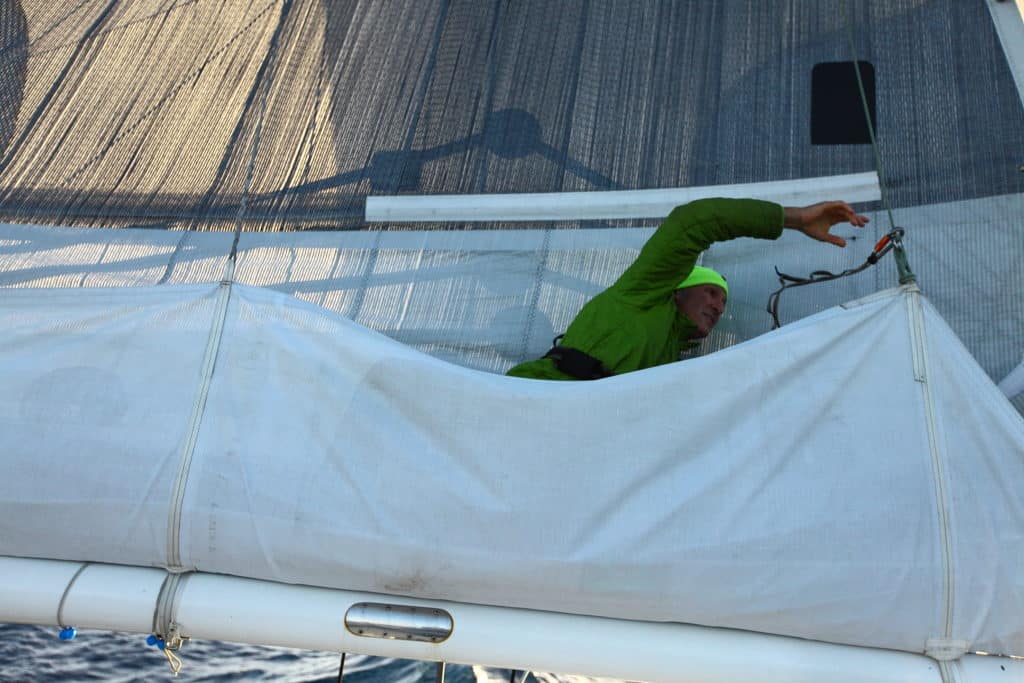
After 30 days at sea, we arrived safely in Fremantle, Western Australia. Looking back, I see the voyage was one of the most challenging things I’ve ever done — a huge test of physical and mental endurance. It’s like being in labor, but as a sustained effort for 30 days straight. I gained huge respect for anyone who has sailed down south — solo, shorthanded or fully crewed. It’s an intense place to be, with an immense amount of pressure for perfect performance.
I’m typically seasick the first three days of our voyages, but throughout this trip, I was unusually nauseous even when conditions were smooth. I thought that perhaps I wasn’t cut out for this type of extreme sailing. Then I found out, a month after arriving in Fremantle, that I was pregnant during the passage.
James was a pillar of strength during the journey — never complacent, always up and out in the elements and dealing with whatever variables came our way. No matter how tired he was, sail changes had to be made, water ballast adjusted, batteries charged, water made, all systems maintained and, most important, love and attention given to the kids.
Our children adapted to all the conditions we experienced. In our one-month passage, the kids and I were on deck literally four times — for a sum total of about an hour. When seas were smooth, they were allowed to go on deck wearing a full body harness, tethered to the boat. Down below, we did art projects and puzzles, made blanket forts, blasted music from the iPod, sang, danced and played games. They watched for dolphins, whales, albatross and other marine life. They fought and had tantrums and timeouts, just like they did on land.
Raivo was just starting to talk, and his favorite phrases throughout the trip were “treats,” “boat,” “loud” and “Wow, big kaboom!” accompanied by a clap of his hands. Tormentina got over her seasickness once we were out of the Agulhas Current. She kept busy constantly drawing, filling an entire sketchbook with her artwork. She searched every night for the first star. When she found it, she would make a secret wish, and afterward she was allowed to watch movies. After a big wave washed over us, she would climb up the companionway steps to see if any squid came aboard.
When the seas were very aggressive, everyone was berth-bound, sometimes for two to three days at a time. The kids both had a good sense of the changes in the boat while underway and were instinctively mellow when they needed to be.
The most amazing thing is that the kids never once asked, “When are we going to get there?” Nor were they ever scared. They felt safe because Anasazi Girl is home to them, and we were with them full time.
Voyaging is like a time capsule for our family. It is a very special period, when everyone is completely together and completely present. Life is simple. We sail from point A to point B. Everything we need to live is essentially in one space. We don’t think about money or work. We have no meetings, schedules or other people to interact with besides our kids. Our children receive our undivided attention.
In the Southern Ocean, the water was clean, the air fresh and the rainwater tasty. No sunrise or sunset went unnoticed. Every morsel of food we ate and every drop of water we drank was valued. Every second we were together was priceless.
This sailing life has been such a gift for us and for our children.
Somira Sao, James Burwick and their children are currently living on Navarino Island, Chile, where they are working on replacing Anasazi Girl’s rig. Follow along on their adventures at the family’s website anasaziracing.blogspot.com.

